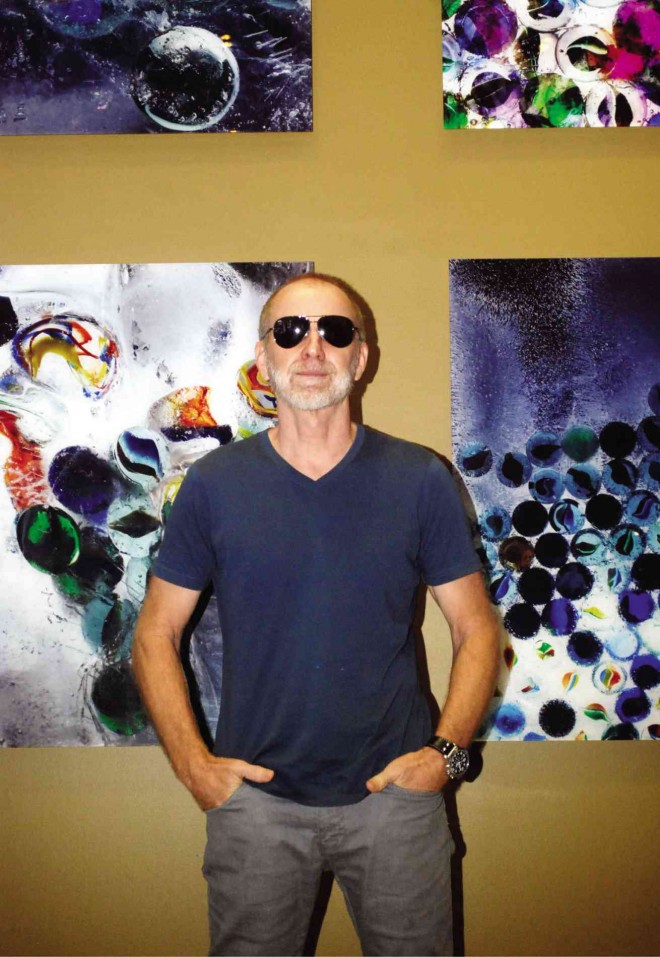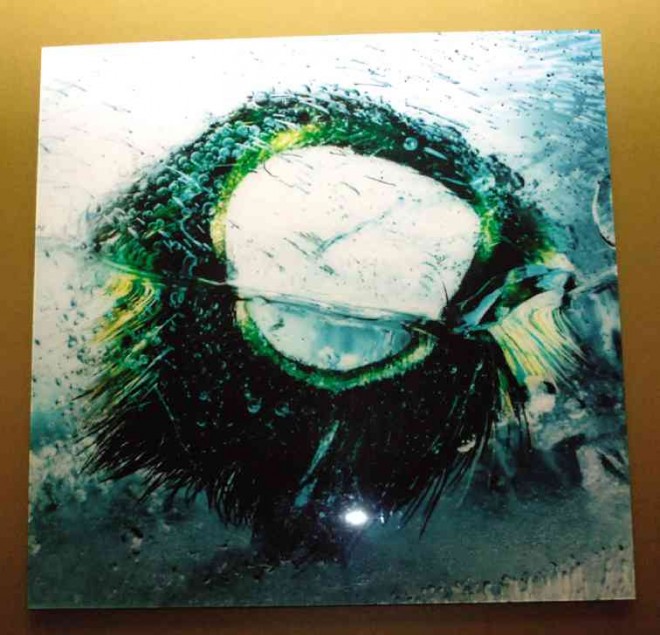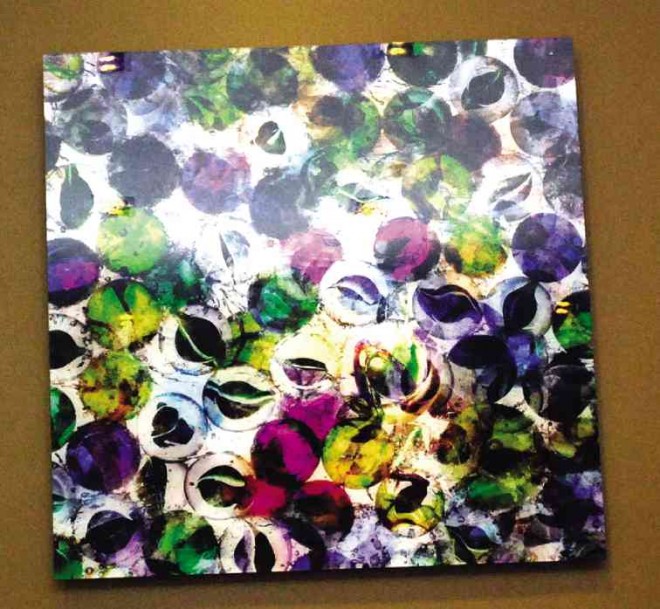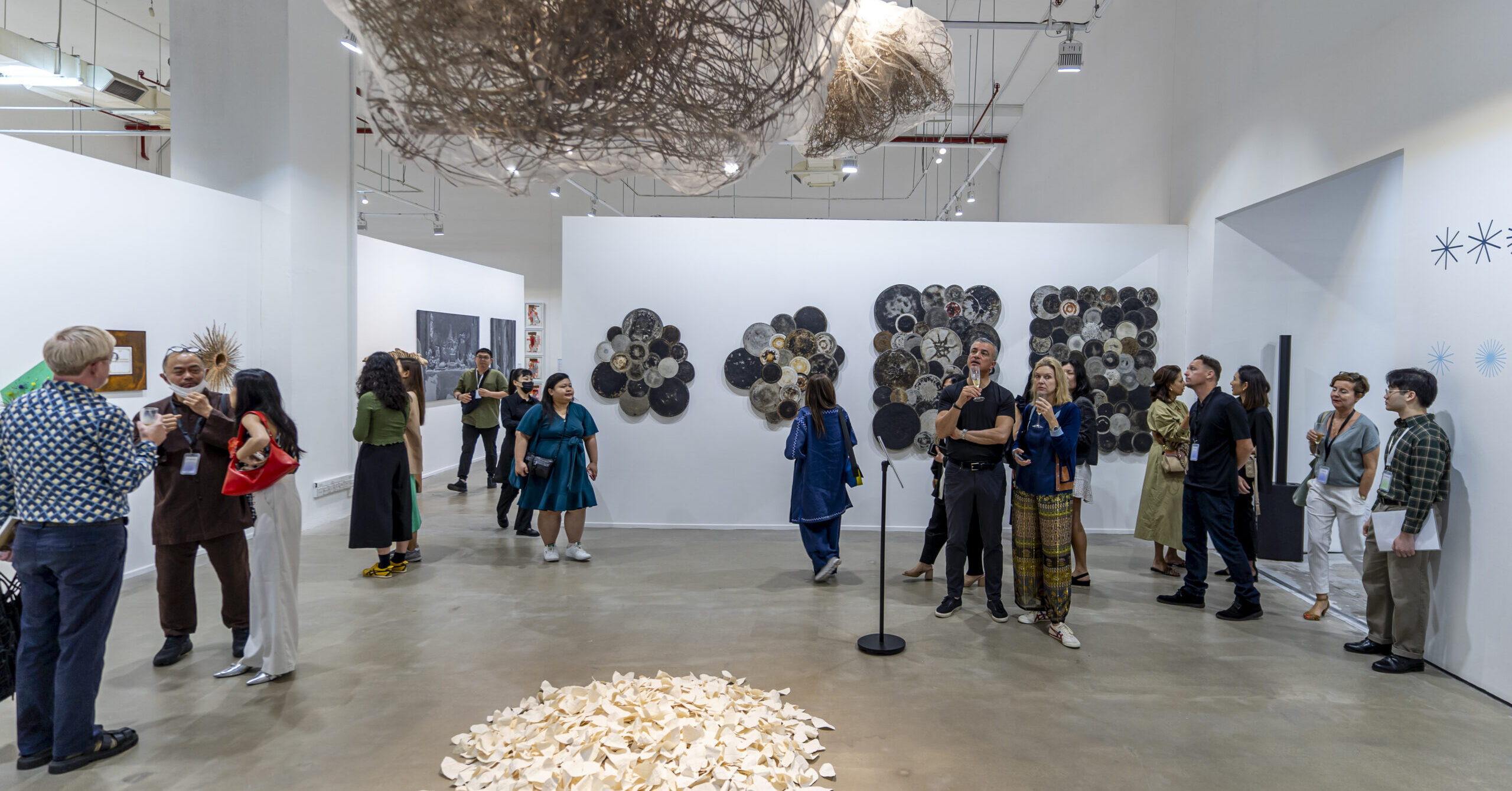
he said these shots were the “hardest” to execute as it took several
layers of water and marbles to create the images. ARNOLD ALMACEN
MANILA, Philippines–Some years back, Tom Epperson, an American photographer based in Manila, spent about a year shooting inanimate objects trapped in ice—everyday stuff like toys, a balisong (folding knife), a rosary, an abaniko (folding fan), a shirt emblazoned with Manny Pacquaio’s face, and a school of pucker-mouthed sapsap.
Epperson was imagining what it would be like if, in a future ice age, a Filipino middleclass family long gone would have only their material possessions left to tell their story.
At that time, Epperson had just returned to Manila from a monthlong trip to wintry Mongolia when he chanced upon a television documentary about the coming of another ice age.
Call it serendipity, but Epperson just had an exhibit then called “Frozen,” in which 40 images of a variety of flowers frozen in ice were featured.
A friend bought one of his prints and showed it to a New York-based gallery owner who happened to be visiting the country.
The gallery owner was intrigued. A meeting ended with the gallery owner asking Epperson to do “something completely new.”
That was when Epperson came up his imaginary Pinoy ice age family.
Epperson said the gallery owner wanted him to “shoot things that were close to (me)… He just asked me to cover the whole gamut, something related to religion, something related to sex, something related to food… and then he left the rest open to my interpretation.”
Epperson wasted no time collecting the objects that would reflect the personalities of his “family”—a husband, his wife, a daughter and a son.
Walk-in freezer
Their story was told in 16 prints, each measuring about five by four feet, in an exhibit called “12 Below” (the temperature of the walk-in freezer where Epperson shot) that was shown in the Tyler Rollins Fine Art Gallery in New York. The exhibit was reprised in Makati City three years ago.
Epperson is showing his “12 Below” prints again, this time at Lulu restaurant along Leviste Street in Salcedo Village, Makati, starting Dec. 7.
Already hanging prominently on one wall is a set of prints featuring jolen or glass marbles that have formed part of the childhood of many Filipino children. Epperson noted that marbles are “probably the hardest things to freeze. I had to freeze a bit of water, put the marbles, freeze a bit more (water), put more marbles in…”

Epperson initially sent just one shot of the marbles, but the gallery owner “liked them so much he asked me to do a series… Some of the stuff would take me a week to do.”
One thing that Epperson learned about water and the resulting ice is that the element can have its own personality that a photographer has to adjust to.
“I learned as I went along,” he said.
“If you want clear ice, you have to take a specific type of water, let it set, boil it, let it set (again) and then you get clear, clear water. But if I had done that, you would have a hard time telling that these (objects) were frozen. You wouldn’t get all the bubbles in there… You’d probably lose the energy of the shot,” the photographer added.
Epperson pointed to a print in which the ice appears to sway in ripples. “I laid the ice down on some fabric that had some folds in it and that’s what happens. So you use these things to your advantage,” Epperson said.
Since inanimate objects have different weights and densities, they also behave differently while being frozen in water.
A plastic Barbie doll owned by Epperson’s wife Jenni floated on the water, so it had to be held down with weights.
A toy car made of metal sank to the bottom of the tank and had to be propped up with fishing lines.
Floating underwater
The amount of time before a piece of ice is pulled out of the freezer also affects how the objects frozen inside appear on the surface.
Epperson noted that the Barbie “took a really long time” to appear more clearly on ice. He had a clear shot of Barbie “that looks like she’s lying down, floating underwater,” but instead he chose another shot where she appears to be wrapped in rutilated quartz, her face hidden by a huge crack in the ice.
The series of four prints hanging inside Lulu all feature marbles, but each photograph is different. Ice, like water, refracts light. In many cases, the image of an object is distorted.
There is a photo in which the marbles appear like Venetian glass beads, and another where the jolen seem like an underwater shot of frogs’ eggs.
Epperson’s favorite, however, is a print of frozen marbles so heavily distorted they appear like a man shot from behind, his arms across his chest as he shivers in the cold.
Epperson turned to a print of sampaguita garlands laid on a sheet of ice and then covered with another sheet of ice before being snapped by a camera.
 On close inspection, the garlands, which appear to be swept by a wind under ice, is like a haunting image of a faceless Virgin Mary.
On close inspection, the garlands, which appear to be swept by a wind under ice, is like a haunting image of a faceless Virgin Mary.
Epperson then showed a photograph of what seems like a sea urchin cut in half and soaked underwater.
“It’s interesting what people saw (in the New York exhibit). It’s also the hardest one to explain… It’s a cock ring,” he said.
Allegedly made from a goat’s eyelashes, this icon of Pinoy pop culture was apparently the most intriguing to New Yorkers who couldn’t figure out what it was.
“There were two women,” he recalled, “probably in their mid-80s. They were like my grandmother asking me, ‘Sir, what is this?’ I explained to them that it’s used for sex. And then they continued asking, ‘Have you used one?’”
“That was the beauty of it. A lot of the other subjects were very straightforward but the cock ring was so abstract; that’s why it got a lot of questions,” Epperson added.
Tom Epperson’s exhibit “12 Below” will open on Dec. 7 at Lulu restaurant at the ground floor of V Corporate Center, 125 L.P. Leviste St., Salcedo Village, Makati City.














































